|
Books Should Be Free Loyal Books Free Public Domain Audiobooks & eBook Downloads |
|
|
Books Should Be Free Loyal Books Free Public Domain Audiobooks & eBook Downloads |
|
War Stories |
|---|
|
Book type:
Sort by:
View by:
|
By: Mary Rowlandson (c.1637-1711) | |
|---|---|
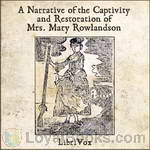 A Narrative of the Captivity and Restoration of Mrs. Mary Rowlandson
A Narrative of the Captivity and Restoration of Mrs. Mary Rowlandson
This is the story of Mary Rowlandson’s capture by American Indians in 1675. It is a blunt, frightening, and detailed work with several moments of off-color humor. Mary, the wife of a minister, was captured by Natives during King Philips War while living in a Lancaster town, most of which was decimated, and the people murdered. See through her eyes, which depict Indians as the instruments of Satan. Her accounts were a best-seller of the era, and a seminal work, being one of the first captivity narratives ever published by a woman... | |
By: Mary Seacole (1805-1881) | |
|---|---|
 Wonderful Adventures of Mrs. Seacole in Many Lands
Wonderful Adventures of Mrs. Seacole in Many Lands
I should have thought that no preface would have been required to introduce Mrs. Seacole to the British public, or to recommend a book which must, from the circumstances in which the subject of it was placed, be unique in literature. If singleness of heart, true charity, and Christian works; if trials and sufferings, dangers and perils, encountered boldly by a helpless woman on her errand of mercy in the camp and in the battle-field, can excite sympathy or move curiosity, Mary Seacole will have many friends and many readers... | |
By: May Sinclair (1863-1946) | |
|---|---|
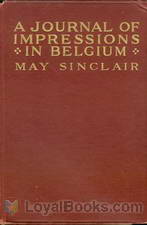 Journal of Impressions in Belgium
Journal of Impressions in Belgium
In 1914, at the age of 51, the novelist and poet May Sinclair volunteered to leave the comforts of England to go to the Western Front, joining the Munro Ambulance Corps ministering to wounded Belgian soldiers in Flanders. Her experiences in the Great War, brief and traumatizing as they were, permeated the prose and poetry she wrote after this time. Witness of great human pain and tragedy, Sinclair was in serious danger of her life on multiple occasions. This journal makes no attempt to be anything more than a journal: a lucid, simple, heart-breaking account of war at first hand. | |
By: Milo Hastings (1884-1957) | |
|---|---|
 In the Clutch of the War-God
In the Clutch of the War-God
In three parts, from Physical Culture magazine, July - September, 1911. In this story, the author warns of the coming of a world war between Japan and U.S. While the Japanese have a superior society, they suffer from food shortages and over-population so go to war with the U.S., who is plagued by a society of ill health and habit. Some predictions are remarkably accurate. The story itself was commissioned by Bernarr Macfadden, who was an early proponent of health and fitness in the U.S. and founded the magazine publisher McFadden Publications. - Summary by Kate Follis | |
By: Morgan Robertson | |
|---|---|
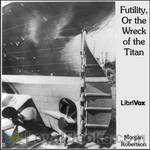 Futility, Or the Wreck of the Titan
Futility, Or the Wreck of the Titan
This novel was published a full 14 years before the sinking of the Titanic, but listeners may be surprised at how many parallels this fictional tale has with subsequent true events. The Titan is the largest and most technologically advanced steamship of her time. She is considered unsinkable. Her full speed crossings of the Northern Lane Route carry her rich passengers in the highest standards of luxury and comfort. The less well-off travel in rougher quarters but still benefit from the speed of travel... | |
By: N. P. Dawson | |
|---|---|
 Good Soldier; A Selection Of Soldiers' Letters, 1914-1918
Good Soldier; A Selection Of Soldiers' Letters, 1914-1918
“Here are boys, all sorts of boys: French, English, Italian, American… These are soldiers’ letters written home. But reading, one finds that he does not think of them as letters at all, but as boys… but the spirit of these letters cannot be defeated. The dead will rise again.” Each letter is introduced by a paragraph or two about the writer. - Summary by Author's Introduction and David Wales | |
By: Nellie McClung (1873-1951) | |
|---|---|
 Three Times and Out
Three Times and Out
The true story of M. C. Simmons, a Canadian soldier captured by the German Army during the early days of World War I. We read of his sixteen months of imprisonment, his encounters with other captured troops of the other Allied armies and his observations of the nature of his captors and their countrymen. Most compellingly we read of his escape from POW camp, his recapture and punishment, and then the capture and punishment following his second escape attempt, climaxing in his third escape attempt and daring travel through enemy territory against all odds... | |
By: Niccolò Machiavelli (1469-1527) | |
|---|---|
 Art of War (Neville Translation)
Art of War (Neville Translation)
The Art of War is the only book published by Niccolo Machiavelli during his lifetime, and he saw it as one of his finest achievements. The Art of War develops many themes introduced in Machiavelli’s earlier works “The Prince” and “Discourses” and presents them as the collected wisdom of a fictional leader Lord Fabrizio Colonna. The book is constructed as a series of dialogues supposedly held during a summer afternoon spent in the Orti Oricellari gardens in Florence.The stated aim is “To... | |
By: Nicholas Canzona (1925-1985) | |
|---|---|
 U. S. Marine Operations in Korea 1950-1953, Volume 1: The Pusan Perimeter
U. S. Marine Operations in Korea 1950-1953, Volume 1: The Pusan Perimeter
It meant little to most Americans on 25 June 1950 to read in their Sunday newspapers that civil strife had broken out in Korea. They could hardly have suspected that this remote Asiatic peninsula was to become the scene of the fourth most costly military effort of American history, both in blood and money, before the end of the year. With a reputation built largely on amphibious warfare, Marines of the 1st Brigade were called upon to prove their versatility in sustained ground action. On three separate occasions within the embattled Perimeter—south toward Sachon and twice along the Naktong River—these Marine units hurled the weight of their assault force at the enemy... | |
 U.S. Marine Operations in Korea, 1950-1953, Volume 2: The Inchon-Seoul Operation
U.S. Marine Operations in Korea, 1950-1953, Volume 2: The Inchon-Seoul Operation
The Inchon Landing was a major amphibious operation, planned in record time and executed with skill and precision. Even more, it was an exemplification of the fruits of a bold strategy executed by a competent force. The decision to attack at Inchon involved weakening the line against enemy strength in the Pusan Perimeter in order to strike him in the rear. It involved the conduct of an amphibious attack under most difficult conditions of weather and geography. It ultimately culminated with combat in the heart of Seoul. - Summary by Lemuel C. Shepherd, Jr. and Aaron Bennett | |
By: Oliver Wendell Holmes, Sr. (1809-1894) | |
|---|---|
 My Hunt After 'The Captain'
My Hunt After 'The Captain'
Holmes describes his frantic search through Civil War torn landscapes for his wounded son, the future Supreme Court Justice. Originally published in The Atlantic Magazine, 1862. Holmes, Sr. (1809 -1894) was an American physician, poet, professor, lecturer, and author. He was regarded by his peers as one of the best writers of the 19th century. His most famous prose works are the "Breakfast Table" series, which began with The Autocrat of the Breakfast Table (1858). He is also recognized as an important medical reformer. | |
By: P. G. Wodehouse (1881-1975) | |
|---|---|
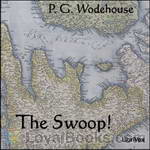 The Swoop!
The Swoop!
The Swoop! tells of the simultaneous invasion of England by several armies — “England was not merely beneath the heel of the invader. It was beneath the heels of nine invaders. There was barely standing-room.” (ch. 1) — and features references to many well-known figures of the day, among them the politician Herbert Gladstone, novelist Edgar Wallace, actor-managers Seymour Hicks and George Edwardes, and boxer Bob Fitzsimmons. | |
By: Padraic Colum (1881-1972) | |
|---|---|
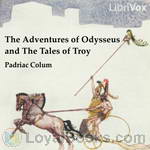 The Adventures of Odysseus and the Tale of Troy
The Adventures of Odysseus and the Tale of Troy
Also known as “The Children’s Homer,” this is Irish writer Padraic Colum’s retelling of the events of Homer’s Iliad and Odyssey for young people. Colum’s rich, evocative prose narrates the travails of Odysseus, King of Ithaca: his experiences fighting the Trojan War, and his ten years’ journey home to his faithful wife Penelope and his son Telemachus. | |
By: Pat O'Brien (1890-1920) | |
|---|---|
 Outwitting The Hun; My Escape From A German Prison Camp
Outwitting The Hun; My Escape From A German Prison Camp
A true war narrative, published in 1918 while WWI was still going on. | |
By: Philip Gibbs (1877-1962) | |
|---|---|
 Now It Can Be Told
Now It Can Be Told
In this book I have written about some aspects of the war which, I believe, the world must know and remember, not only as a memorial of men's courage in tragic years, but as a warning of what will happen again--surely--if a heritage of evil and of folly is not cut out of the hearts of peoples. Here it is the reality of modern warfare not only as it appears to British soldiers, of whom I can tell, but to soldiers on all the fronts where conditions were the same... The purpose of this book is to get... | |
By: Phoebe Yates Pember (1823-1913) | |
|---|---|
 Reminiscences of a Southern Hospital, by Its Matron
Reminiscences of a Southern Hospital, by Its Matron
Phoebe Yates Pember served as a matron in the Confederate Chimborazo military hospital in Richmond, Virginia, during the Civil War, overseeing a dietary kitchen serving meals to 300 or more wounded soldiers daily. Reminiscences of a Southern Hospital is her vivid recounting of hospital life and of her tribulations (and personal growth) as a female administrator. To follow her from day one, when she is greeted with “ill-repressed disgust” that “one of them had come,” and she, herself, “could... | |
By: Pierre Loti (1850-1923) | |
|---|---|
 War
War
Pierre Loti [Julien Viaud] (1850-1923) was a French naval officer and novelist. The present book is one of his few works of non-fiction, a small collection of letters and diary entries that describe his views and experiences in the wars and military operations in which he participated. Besides World War I, he also sheds light upon his views and involvement in the preparations for the Turkish Revolution of 1923, for which until today a famous hill and popular café in Istanbul are named after him. | |
By: Ralph Scott | |
|---|---|
 Soldier's Diary
Soldier's Diary
This 1923 memoir of a World War I soldier is a well written much respected first-hand account of the brutal fighting in the last year of the war. - Summary by David Wales | |
By: Ralph W. Bell | |
|---|---|
 Canada in War-Paint
Canada in War-Paint
There is no attempt made in the little sketches which this book contains to deal historically with events of the war. It is but a small Souvenir de la guerre—a series of vignettes of things as they struck me at the time, and later. I have written of types, not of individuals, and less of action than of rest. The horror of war at its worst is fit subject for a master hand alone. - Summary by the author, Capt. Ralph W. Bell | |
By: Randall Garrett (1927-1987) | |
|---|---|
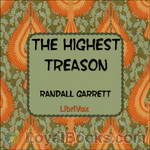 The Highest Treason
The Highest Treason
Set in a future in which humanity’s dream of total equality is fully realized and poverty in terms of material wealth has been eliminated, humanity has straight-jacketed itself into the only social system which could make this possible. Class differentiation is entirely horizontal rather than vertical and no matter what one’s chosen field, all advancement is based solely on seniority rather than ability. What is an intelligent and ambitious man to do when enslaved by a culture that forbids him from utilizing his God-given talents? If he’s a military officer in time of war, he might just decide to switch sides... | |
By: Randolph Silliman Bourne (1886-1918) | |
|---|---|
 Untimely Papers
Untimely Papers
This is a posthumous collection of essays by Randolph Bourne. Many originally appeared in the journal "The Seven Arts," before the controversial end to its run. Also included is the unfinished manuscript of "The State," the book Bourne worked on until his tragic death in December, 1918, at the hands of the Spanish flu pandemic. In the words of the book's editor, poet James Oppenheim, "We have nothing else like this book in America. It is the only living record of the suppressed minority, and is, as so often the case, the prophecy of that minority's final triumph." - Summary by Ben Adams | |
By: Richard Haigh (1895-) | |
|---|---|
 Life in a Tank
Life in a Tank
Richard Haigh was an Infantry lieutenant in the 2nd Royal Berkshire Infantry Regiment serving in the Somme area in 1916. Shortly after Tanks were first used in battle in September of 1916 the British Army asked for volunteers, Lieutenant Haigh signed up and was accepted in December of 1916. He describes the training and actions he participated in until the war ended in 1918. He was awarded MC in 1916 as Lt. (acting Capt.) Richard Haigh, Royal Berkshire Regiment. He was commissioned from the RMC (Sandhurst) to the Berkshires 16th Feb 1915; on resigning his commission in 1919, he joined the General Reserve of Officers. | |
By: Richard Harding Davis (1864-1916) | |
|---|---|
 Notes of a War Correspondent
Notes of a War Correspondent
Experiences and observations of the journalist in the Cuban-Spanish War, the Greek-Turkish War, the Spanish-American War, the South African War, and the Japanese-Russian War, accompanied by "A War Correspondent’s Kit." | |
By: Richard M. McMurry | |
|---|---|
 Road Past Kennesaw: The Atlanta Campaign Of 1864
Road Past Kennesaw: The Atlanta Campaign Of 1864
“…there can be little doubt that the Federal drive on Atlanta, launched in May 1864, was the beginning of the end for the Southern Confederacy…. The Atlanta Campaign had an importance reaching beyond the immediate military and political consequences. It was conducted in a manner that helped establish a new mode of warfare. From beginning to end, it was a railroad campaign, in that a major transportation center was the prize for which the contestants vied, and both sides used rail lines to marshal, shift, and sustain their forces…... | |
By: Richard Wayne Lykes | |
|---|---|
 Campaign For Petersburg
Campaign For Petersburg
In the American Civil War the Union victory in the ten-month campaign for the city of Petersburg, Virginia , led directly to the surrender of the Confederacy within two weeks. This 1970 National Park Service booklet tells the story of the campaign. It focuses on the meaning of the campaign and the experience of the soldiers of both sides, with a minimum of references to military units. The listener to this recording may want to view the printed booklet for excellent maps and revealing photographs. - Summary by david wales | |
By: Richmond Pearson Hobson (1870-1937) | |
|---|---|
 Sinking of the ''Merrimac''
Sinking of the ''Merrimac''
During the Spanish-American War, Naval Constructor Hobson U.S.N. devised a plan to scuttle a ship in the channel leading to Santiago harbor in Cuba and thus bottle up the Spanish fleet at anchor in the bay. This book contains Hobson's personal narrative of how the scheme was carried out and of what happened afterward. | |
By: Robert Balmain Mowat (1883-1941) | |
|---|---|
 Wars of the Roses 1377-1471
Wars of the Roses 1377-1471
The Wars of the Roses, 1377-1471, were a series of English civil wars fought for the control of the throne of England between two rival cadet branches of the House of Plantagenet, Lancaster and York. The Scottish historian, Robert Balmain Mowat writes that these wars saw "the death of the old England and the beginning of the new." But they also saw the emergence of great personalities: the noble Richard of York, Warwick the Kingmaker, King Edward IV, indolent and energetic by turns, and his relentless opponent, Margaret of Anjou, a true she-wolf of France. | |
By: Robert Burrows (1812-1897) | |
|---|---|
 Extracts from a Diary Kept by the Rev. R. Burrows during Heke's War in the North, in 1845
Extracts from a Diary Kept by the Rev. R. Burrows during Heke's War in the North, in 1845
An eye-witness account of the so-called Flagstaff War, fought between Maori warriors, led by Hone Heke, and British troops between March 1845 and January 1846 in and around the Bay of Islands. Ostensibly triggered by the cutting down of the flagstaff above Kororareka (now Russell), Heke's attack on the town was a consequence of festering grievances following the signing of the Treaty of Waitangi and annexation of New Zealand by the British Crown in 1840. The Reverend Robert Burrows had charge of the mission station and school at Waimate, inland from the Bay of Islands... | |
By: Robert E. Lee, Jr. (1843-1914) | |
|---|---|
 Recollections And Letters Of General Robert E. Lee By His Son
Recollections And Letters Of General Robert E. Lee By His Son
The life of the Confederate States of America general, Robert E. Lee, through the eyes of his youngest son, who was also a Confederate Army officer. Published in 1905. Note: in many of the letters the recipient's name is printed after General Lee's signature; the White House is not that in Washington but General Lee's elder son's house in Virginia. - Summary by david wales | |
By: Robert Futrell (1917-1999) | |
|---|---|
 Vietnam: The Advisory Years to 1965
Vietnam: The Advisory Years to 1965
This book explains the policy of the United States and France toward Vietnam beginning after World War II until the beginning of America's entry into the Vietnam War in 1965. Summary by Craig Campbell | |
By: Robert Henry Newell (1836-1901) | |
|---|---|
 The Orpheus C. Kerr Papers
The Orpheus C. Kerr Papers
These are a collection of humorous "letters" written by a fictional character to a relation in the north during the Civil War. They were published regularly in the New York Mercury Sunday newspaper for the four years of the war. In the letters, Newell pokes fun at northern generals, politicians, and has hard things to say about southerners. Although Newell is rarely serious, I imagine the letters reflect the bitterness and frustration of many northerners at the time. (Introduction by Margaret) | |
By: Robert James Cressman | |
|---|---|
 Infamous Day: Marines At Pearl Harbor 7 December 1941
Infamous Day: Marines At Pearl Harbor 7 December 1941
Historical overview and personal reminiscences published in 1992. Pearl Harbor attack 7 December 1941. Part of U.S. Government U.S. Marine Corps World War II Commemorative Series. - Summary by David Wales | |
By: Robert James Manion (1881-1943) | |
|---|---|
 Surgeon In Arms
Surgeon In Arms
Robert James Manion was a Canadian doctor who volunteered in the Canadian medical corps during World War I. This book is his memoir of the war. After the war he entered politics and served in several Canadian governments. The listener may note a lack of mention of the United States soldier; this is because the memoir was written before the entry of that country into the war. - Summary by David Wales | |
By: Robert Laurence Binyon (1869-1943) | |
|---|---|
 Winnowing Fan: Poems On The Great War
Winnowing Fan: Poems On The Great War
This little gem of a book contains twelve poems about World War I. There is more to it than its intrinsic value as verse. Edward Elgar (1857-1934) set three of the poems (The Fourth Of August, To Women, For The Fallen) in his cantata The Spirit of England (1915-1917). Since its composing and musical setting, For The Fallen has held an honored place in every November 11th Remembrance Day for Britain and the Commonwealth (Memorial Day for Americans). Moved by the opening of the Great War and the... | |
By: Robert Louis Stevenson | |
|---|---|
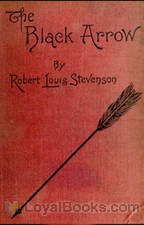 The Black Arrow; a Tale of Two Roses
The Black Arrow; a Tale of Two Roses
The Black Arrow tells the story of Richard (Dick) Shelton during the Wars of the Roses: how he becomes a knight, rescues his lady Joanna Sedley, and obtains justice for the murder of his father, Sir Harry Shelton. Outlaws in Tunstall Forest organized by Ellis Duckworth, whose weapon and calling card is a black arrow, cause Dick to suspect that his guardian Sir Daniel Brackley and his retainers are responsible for his father’s murder. Dick’s suspicions are enough to turn Sir Daniel against him, so he has no recourse but to escape from Sir Daniel and join the outlaws of the Black Arrow against him... | |
By: Robert Marshall Allen (1886-1946) | |
|---|---|
 War Letters From A Young Queenslander
War Letters From A Young Queenslander
Letters from a Brisbane doctor posted to the Western Front from 1914 to December 1915. He tells anecdotes of World War I including stories of "de-lousing" an entire regiment, the precise arrangements of the urine trenches and his eyewitness accounts of the battles of Neuve Chapelle and Ypres and a contemporary comment on the Gallipoli campaign. He describes how the enemy rains shells on the ambulances and the retrievals of the wounded from the trenches at night. This was also a time of great medical... | |
By: Robert Marshall Utley | |
|---|---|
 Custer Battlefield: A History And Guide To The Battle Of The Little Bighorn
Custer Battlefield: A History And Guide To The Battle Of The Little Bighorn
It should be noted that this national park is now called the Little Bighorn Battlefield National Monument. “The long, tragic history of Indian warfare in the American West reached its climax with the defeat of Lt. Col. George Armstrong Custer and his 7th Cavalry in Montana’s valley of the Little Bighorn River on June 25, 1876. Although the Indians won the battle, they subsequently lost the war against the white man’s efforts to end their independent way of life. The story of the battle and its consequences is told in the following pages by Robert M... | |
By: Robert Mearns Yerkes (1876-1956) | |
|---|---|
 Army Mental Tests
Army Mental Tests
Prepared in cooperation with the staff of the surgeon general's office as a source of information and printed materials concerning psychological testing used within the United States Army and indications of the possible use of similar methods in education and industry. - Summary by Leon Harvey | |
By: Robert Sidney Bowen (1900-1977) | |
|---|---|
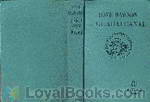 Dave Dawson on Guadalcanal
Dave Dawson on Guadalcanal
One of a series of youth-oriented adventure books set in contemporary WWII era, featuring fictional American flying ace, Dave Dawson. | |
By: Romain Rolland (1866-1944) | |
|---|---|
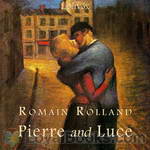 Pierre and Luce
Pierre and Luce
Pierre and Luce were an unlikely young pair who found themselves in the chaos of Paris during the war; Pierre, the shy, recently conscripted pacifist, and Luce, the free spirited artist in training, and both confused about the things going on around them. Why were these war birds flying overhead? Why these warning sirens, and occasional bombs exploding in the distance? Why did the government leaders, who didn't even know one another, hate and destroy so much? Why did these two delicate young adults find each other now? This story takes place between January 30 and Good Friday, May 29, 1918. (Introduction by Roger Melin) | |
By: Rudyard Kipling | |
|---|---|
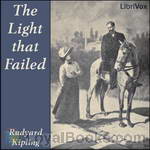 The Light that Failed
The Light that Failed
This novel, first published in 1890, follows the life of Dick Heldar, a painter. Most of the novel is set in London, but many important events throughout the story occur in Sudan or India. It was made into a 1916 film with Jose Collins and a 1939 film by Paramount starring Ronald Colman. | |
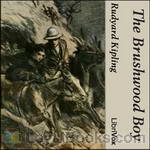 The Brushwood Boy
The Brushwood Boy
The experiences in public school, Sandhurst and military life in India of Major George Cottar together with his adventures in the dream world he discovers and frequents. | |
 France At War: On the Frontier of Civilization
France At War: On the Frontier of Civilization
In 1915, as the "Great War" (World War 1) entered its second year Rudyard Kipling made a journalistic tour of the front, visiting French armed forces. By then he was already winner of the Nobel Prize for Literature (the first writer in English to be so honoured). He published his observations in articles in the Daily Telegraph in England, and in the New York Sun. At that stage of the war nationalistic sentiments were running high but the true cost of war was beginning to be understood "at home"... | |
 Fleet In Being; Notes Of Two Trips With The Channel Squadron
Fleet In Being; Notes Of Two Trips With The Channel Squadron
[Kipling] became involved in the debate over the British response to the rise in German naval power known as the Tirpitz Plan to build a fleet to challenge the Royal Navy, publishing a series of articles in 1898 which were collected as A Fleet in Being. And as always with Kipling there is that wonderful sardonic humor and attention to the lower orders of being. | |
 Fringes Of The Fleet
Fringes Of The Fleet
During the war (WWI), [Kipling] wrote a booklet The Fringes of the Fleet containing essays and poems on various nautical subjects of the war. Some of the poems were set to music by English composer Edward Elgar. | |
 New Army in Training
New Army in Training
Kipling's brief assessment of the British New Army being assembled to fight in the Great War. Concerns itself with training and logistics but more importantly with the human side of the vast collection of new battalions. These come from throughout the Empire, including Canada, India, and other territories. - Summary by KevinS | |
By: Saki | |
|---|---|
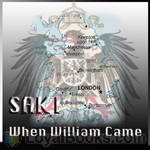 When William Came
When William Came
We have had many novels about alternate histories, often of the ‘What would have happened if Hitler had won the war’ type and this is another – except that this one is set in 1913 and the ‘William’ of the title is that old bogeyman ‘Kaiser Bill’. For some reason, at the height of Britain’s power, the fear of invasion was common at that time. (See ‘The Riddle of the Sands’, ‘The Battle of Dorking’, ‘Spies of the Kaiser’ or even ‘The War of the Worlds’)WARNING:- Contains mild anti-semitism and jingoism typical of the period | |
By: Samuel H. Fletcher | |
|---|---|
 History of Company A, Second Illinois Cavalry
History of Company A, Second Illinois Cavalry
The purpose of this sketch is to keep green the memory of that little band of men known as Company A, of the Second Illinois Cavalry, who fought in the Civil War. | |
By: Samuel Madden (1686-1765) | |
|---|---|
 Reign of George VI, 1900-1925: A Forecast Written in the Year 1763
Reign of George VI, 1900-1925: A Forecast Written in the Year 1763
Imagine a world in which there were no major revolutionary upheavals , there was no Victorian Age, the Great War went unfought. No Cold War, no United States, no Soviet Union; in short, no world as we have known it. Such is the vision presented in this counterfactual historical work.Originally written by Samuel Madden in 1763, the work is a prospective look at events in Europe from 1900-1925, the reign of Madden's "George VI." Taking the social, political, and economic trends of the eighteenth century and projecting their impact in the twentieth, this work is written in the style of a history of the first quarter of the twentieth century... | |
By: Sarah Emma Edmonds (1841-1898) | |
|---|---|
 Nurse and Spy in the Union Army
Nurse and Spy in the Union Army
The “Nurse and Spy” is simply a record of events which have transpired in the experience and under the observation of one who has been on the field and participated in numerous battles—among which are the first and second Bull Run, Williamsburg, Fair Oaks, the Seven days in front of Richmond, Antietam, and Fredericksburg—serving in the capacity of “Spy” and as “Field Nurse” for over two years.While in the “Secret Service” as a “Spy,” which is one of the most hazardous positions in the army—she penetrated the enemy’s lines, in various disguises, no less than eleven times; always with complete success and without detection... | |
By: Sarah Morgan Dawson (1842-1909) | |
|---|---|
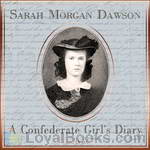 A Confederate Girl's Diary
A Confederate Girl's Diary
Sarah Morgan Dawson was a young woman of 20 living in Baton Rouge, Louisiana, when she began this diary. The American Civil War was raging. Though at first the conflict seemed far away, it would eventually be brought home to her in very personal terms. Her family's loyalties were divided. Sarah's father, though he disapproved of secession, declared for the South when Louisiana left the Union. Her eldest brother, who became the family patriarch when his father died in 1861, was for the Union, though he refused to take up arms against his fellow Southerners... | |
By: Sextus Julius Frontinus (40-103) | |
|---|---|
 Stratagems and The Aqueducts of Rome
Stratagems and The Aqueducts of Rome
Frontinus' Stratagems is a collection of examples of military stratagems from Greek and Roman history, which the author comments based on his own experience as a general in Germania. Many of the stories he tells can also be found in other Roman authors like Valerius Maximus and Livy. His most famous work however is De aquaeductu, The Aqueducts of Rome, an official report to the emperor on the state of the aqueducts of Rome, in two books. It presents a history and description of all the nine aqueducts that provided the water-supply of Rome in the first century, as well as information about the laws relating to its use and maintenance, and the quality of water delivered by each. | |
By: Siegfried Sassoon (1886-1967) | |
|---|---|
 War Poems of Siegfried Sassoon
War Poems of Siegfried Sassoon
Siegfried Sassoon was one of the first to write poetry about the brutal reality of war, based on his real-life experiences in the trenches. He served in World War I on the Western Front and was awarded the Military Cross for bravery under fire. However, he later became a convicted pacifist, threw his Military Cross into the Mersey river, and continued to write and publish poems and political statements against the war. His poems capture the despair he felt towards the war overall, and he paints vivid word pictures that make the reader "pray you'll never know, the hell where youth and laughter go"... | |
By: Sir Arthur Conan Doyle (1859-1930) | |
|---|---|
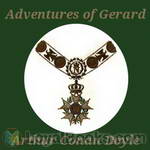 The Adventures of Gerard
The Adventures of Gerard
These lesser known stories were penned by Conan Doyle during the period between killing off Sherlock Holmes in 1893 and reluctantly resurrecting him some ten years later. The swashbuckling, eponymous hero, Etienne Gerard, is one of Napoleon's gallant French Hussars, who considers himself the finest of them all. Through these "Boys Own Adventures", Conan Doyle pokes gentle fun at both the French and the English. This is the second volume containing eight adventures. | |
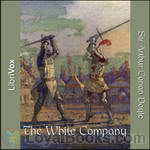 The White Company
The White Company
Set during the Hundred Years’ War with France, The White Company tells the story of a young Saxon man who is learning what it is to be a knight. Raised by Cistercian Monks and rejected by a violent elder brother, Alleyn Edricson takes service with one of the foremost knights in the country. When Alleyn falls in love with the knight’s daughter, he must prove himself to be a courageous and honourable knight before he can win her hand. Alleyn and his friends set forth with the other men-at-arms to join Prince Edward in Bordeaux, from where they will take part in the Prince’s campaign into Spain... | |
 Visit to Three Fronts: June 1916
Visit to Three Fronts: June 1916
In the course of May 1916, the Italian authorities expressed a desire that some independent observer from Great Britain should visit their lines and report his impressions. It was at the time when our brave and capable allies had sustained a set-back in the Trentino owing to a sudden concentration of the Austrians, supported by very heavy artillery. I was asked to undertake this mission. In order to carry it out properly, I stipulated that I should be allowed to visit the British lines first, so that I might have some standard of comparison... | |
 Green Flag and Other Stories of War and Sport
Green Flag and Other Stories of War and Sport
Arthur Conan Doyle was deeply affected by the many wars fought during his lifetime. As many other writers, he used the material for short stories, a collection of which is presented here. | |
By: Sir Edward Shepherd Creasy (1812-1878) | |
|---|---|
 Fifteen Decisive Battles of the World
Fifteen Decisive Battles of the World
This work is Edward Creasy's best known fundamental work of history. It describes in detail 15 battles of world history, beginning with the Battle of Marathon of 490 BC and ending with the Battle of Waterloo of 1815. Each chapter is illustrated with rich historical detail and a timeline of events. | |
By: Sir Stephen King-Hall | |
|---|---|
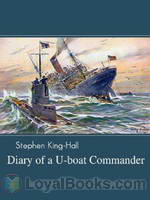 Diary of a U-boat Commander
Diary of a U-boat Commander
The infamous U boats deployed by Germany in the two World Wars have spawned several works of fiction and non-fiction. These deadly vessels were not just efficient and lethal killing machines, but they were also used very effectively in economic blockades. They were positioned primarily to obstruct the conveyance of fuel, food and other essential supplies which the enemy needed to sustain the war effort. In the Diary of a U Boat Commander, the author, Stephen King-Hall draws upon his vast personal experiences as a naval officer in World War I... | |
By: Smedley Butler (1881-1940) | |
|---|---|
 War Is a Racket
War Is a Racket
Marine Maj. Gen. Smedley Butler's expose of American Corporate Imperialism. Butler said, “I served in all commissioned ranks from second lieutenant to Major General. And during that period I spent most of my time being a high-class muscle man for Big Business, for Wall Street, and for the bankers. In short, I was a racketeer for capitalism. I suspected I was just part of the racket all the time. Now I am sure of it.” - Summary by John Greenman and https://www.americanswhotellthetruth.org/portraits/major-general-smedley-butler | |
By: Stephen Crane (1871-1900) | |
|---|---|
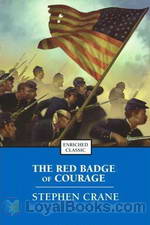 The Red Badge of Courage
The Red Badge of Courage
The Red Badge of Courage is a fiction that tells the story of a soldier named Henry Fleming during the American Civil War. The novel gained widespread praise from critics and was also a commercial success shortly after its release and made Stephen Crane an instant celebrity at the young age of 24. In the novel, Henry was one of the enlisted soldiers in the 304th New York Regiment. He flees from battle in one of the skirmishes they had against the Confederates and to hide his cowardice, he attempted to inflict a wound to himself which is referred to as the “red badge of courage... | |
 Wounds In The Rain; War Stories
Wounds In The Rain; War Stories
Eleven stories of war by the author of The Red Badge of Courage. Stephen Crane was an American author. He is recognized by modern critics as one of the most innovative writers of his generation. Crane's writing is characterized by vivid intensity, distinctive dialects, and irony. Common themes involve fear, spiritual crises and social isolation. His writing made a deep impression on 20th-century writers, most prominent among them Ernest Hemingway, and is thought to have inspired the Modernists and the Imagists. | |
By: Stuart Walcott (1896-1917) | |
|---|---|
 Above the French Lines
Above the French Lines
A collection of letters written by Stuart Walcott while training to be an aviator in France to prepare for combat. Walcott died in his first aerial combat after first downing a German bi-plane. - Summary by KevinS | |
By: Susan Glaspell (1876-1948) | |
|---|---|
 Visioning , A Novel
Visioning , A Novel
"The Visioning, Susan Glaspell's second novel, tells about Katie Jones, a young woman who lives in the comfortable world she knows with a charming circle of friends. Her brother is an army officer, and her uncle lives in Washington. The world she knows is the world they let her see. Until Anne comes into the picture. Katie saves Anne from killing herself. Katie invents a story about Anne, a story which suits Katie's world, but what would she do, and feel, when she discovers the truth? The story focuses around Katie's eye opening experiences and her search for place and meaning in the new world she slowly discovers... | |
By: Talbot Mundy (1879 -1940) | |
|---|---|
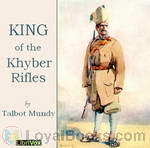 King of the Khyber Rifles
King of the Khyber Rifles
Athelstan King is a British Secret Agent stationed in India at the beginning of WWI. He is attached to the Khyber Rifles regiment as a cover, but his real job is to prevent a holy war. "To stop a holy war single-handed would be rather like stopping the wind--possibly easy enough, if one knew the way." King is ordered to work with a mysterious and powerful Eastern woman, Yasmini. Can King afford to trust her? Can he afford not to? (Introduction by Brett W. Downey) | |
By: Theodore Roosevelt (1858-1919) | |
|---|---|
 The Naval War of 1812
The Naval War of 1812
Somewhat detailed history of naval engagements between the United States and England during the War of 1812, from a decidely American perspective. Completed by the author as a young man at age 24. After 120 years, it remains a standard study of the war. | |
 Rough Riders
Rough Riders
Theodore Roosevelt's personal account of The Rough Riders, the name affectionately bestowed on the 1st United States Volunteer Cavalry, one of three such regiments raised in 1898 for the Spanish-American War and the only one to see action. Roosevelt, serving first as Lt. Colonel and 2nd in command, gives a rousing depiction of the men and horses, equipment, talent, their trip to Cuba, battle strategies, losses, injuries and victories. He says: "In all the world there could be no better material for soldiers than that afforded by these grim hunters of the mountains, these wild rough riders of the plains ... | |
By: Theodore Winthrop (1828-1861) | |
|---|---|
 Theodore Winthrop: A Civil War Narrative Aborted by Death
Theodore Winthrop: A Civil War Narrative Aborted by Death
Theodore Winthrop was a charismatic writer, lawyer, and world traveler. In the New York Seventh Regiment, he was one of the first Union officers killed in the American Civil War. He wrote two articles for The Atlantic Monthly, the first of an intended series on the nascent civil war. He was killed in the Battle Of Big Bethel in June 1861 before he finished the third article. This recording consists of the two finished articles and the Atlantic Monthly obituary which itself contains the third article. These articles are from The Atlantic Monthly for June 1861, July 1861, and August 1861. Note: In article three, “contraband” means African Americans. - Summary by david wales | |
By: Thomas E. Taylor | |
|---|---|
 Running the Blockade
Running the Blockade
The first-person experiences and adventures of blockade runner during the American civil war. - Summary by Delmar H. Dolbier | |
By: Thomas Hardy (1840-1928) | |
|---|---|
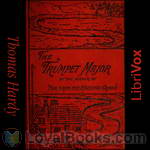 The Trumpet-Major
The Trumpet-Major
Our heroine, Anne Garland, lives quietly in a rural community deep in the English countryside. However, the arrival of several regiments preparing for an expected invasion brings colour and chaos to the county. A graceful and charming young woman, Anne is pursued by three suitors: John Loveday, the trumpet-major in a British regiment, honest and loyal; his brother Robert, a merchant seaman and womaniser, and Festus Derriman, the cowardly son of the local squire. Set at the time of the Napoleonic wars, this is the author’s only historical novel, and unusually for Hardy’s stories, most of the characters live happily ever after. | |
By: Thomas Wentworth Higginson | |
|---|---|
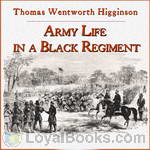 Army Life in a Black Regiment
Army Life in a Black Regiment
These pages record some of the adventures of the First South Carolina Volunteers, the first slave regiment mustered into the service of the United States during the late civil war. It was, indeed, the first colored regiment of any kind so mustered, except a portion of the troops raised by Major-General Butler at New Orleans. These scarcely belonged to the same class, however, being recruited from the free colored population of that city, a comparatively self-reliant and educated race. (From the text) | |
By: Tickner Edwardes (1865-1944) | |
|---|---|
 With The Royal Army Medical Corps in Egypt
With The Royal Army Medical Corps in Egypt
Throughout the First World War, members of the Royal Army Medical Corps provided constant support for British and Allied military troops whether they were fighting on the frontline or engaged in other operations within all areas of the conflict. With the Great War continuing unabated and the battlefront extending through Europe into the Middle East and beyond, a rapid increase in military medical support facilities and infrastructure was urgently implemented to handle the ever increasing number of wounded, maimed and sick troops evacuated from the combat zone that needed to receive urgent medical and life-saving care... | |
By: Tobias Smollett (1721-1771) | |
|---|---|
 Adventures of Roderick Random
Adventures of Roderick Random
I am Roderick Random. This is the contemporary story of my struggle against the adversity of orphan-hood, poverty, press gangs, bloody duels, rival fortune hunters, and the challenge to be well-dressed through it all. In the course of recounting my adventures to you, dear reader, I will give you a front row seat to the characters of English eighteenth century life including highway robbers, womanizing monks, debt-laden gallants, lecherous corrupt officials, effeminate sea captains, bloodthirsty surgeons, and my dear friend Miss Williams, a reformed prostitute... | |
By: Ulysses S. Grant (1822-1885) | |
|---|---|
 Personal Memoirs of U. S. Grant
Personal Memoirs of U. S. Grant
"In preparing these volumes for the public, I have entered upon the task with the sincere desire to avoid doing injustice to any one, whether on the National or Confederate side, other than the unavoidable injustice of not making mention often where special mention is due. There must be many errors of omission in this work, because the subject is too large to be treated of in two volumes in such way as to do justice to all the officers and men engaged. There were thousands of instances, during the rebellion, of individual, company, regimental and brigade deeds of heroism which deserve special mention and are not here alluded to... | |
By: United States Arms Control and Disarmament Agency | |
|---|---|
 Worldwide Effects of Nuclear War: Some Perspectives
Worldwide Effects of Nuclear War: Some Perspectives
This is a concise yet thorough explanation of what might happen to our world in the aftermath of a nuclear war. The myriad of potential effects will be global and wide-spread, and the potentials are glazed over in this short work. | |
By: United States Army | |
|---|---|
 Project Horizon: Establishment of a Lunar Outpost
Project Horizon: Establishment of a Lunar Outpost
The US national policy on space includes the objective of developing and exploiting this Nation's space capability as necessary to achieve national political, scientific, and security objectives. The establishment of a manned outpost in the lunar environment will demonstrate United States leadership in space. It will also provide a basis for further explorations and operations on the lunar surface, as well as a supporting capability for other US operations in space. - Summary from the text | |
By: United States Office of Strategic Services | |
|---|---|
 Simple Sabotage Field Manual
Simple Sabotage Field Manual
Formed during World War II, the United States Office of Strategic Services (OSS), was organized for special operations and intelligence gathering and analysis. Included in its mission was the implementation of, and training of foreign forces in, propaganda, espionage, subversion, and sabotage. After the war, OSS functions were transferred to the newly formed Central Intelligence Agency (CIA). This “Simple Sabotage Field Manual” was used by OSS agents in training “citizen-saboteurs” in methods for inciting and executing simple sabotage to thwart industry and other vital functions in Axis-occupied areas. | |
By: Unknown | |
|---|---|
 A School History of the Great War
A School History of the Great War
A brief history of The Great War (World War I) designed for students in grades seven and eight. Special emphasis on European history leading up to the war, reasons and events leading to America’s eventual entering the war, and possible ramifications of the war for future generations. | |
By: Upton Sinclair (1878-1968) | |
|---|---|
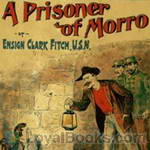 A Prisoner of Morro
A Prisoner of Morro
Upton Sinclair, born in 1878 was a Pulitzer Prize-winning American author. He wrote over 90 books in many genres. Best known for his muckraking novel, The Jungle, Sinclair also wrote adventure fiction. Many of these works were written under the pseudonym, Ensign Clark Fitch, U.S.N. A Prisoner of Morrow, published in 1898 when Sinclair was but 20 years old, is one of these efforts. The period for this work is the ten-week Spanish–American War which occurred in 1898. Revolts against Spanish rule had been prevalent for decades in Cuba and were closely watched by Americans... | |
By: Various | |
|---|---|
 New York Times Current History
New York Times Current History
The New York Times, CURRENT HISTORY, A Monthly Magazine, THE EUROPEAN WAR, VOLUME IIAPRIL, 1915 Germany's War Zone and Neutral Flags The German Decree and Interchange of Notes Answering American Protests to Germany and Britain BERLIN, Feb. 4, (by wireless to Sayville, L.I.)--The German Admiralty today issued the following communication: The waters around Great Britain and Ireland, including the whole English Channel, are declared a war zone on and after Feb. 18, 1915. Every enemy merchant ship found in this war zone will be destroyed, even if it is impossible to avert dangers which threaten the crew and passengers... | |
 Bomb: The 1945 Test of the First Atomic Bomb
Bomb: The 1945 Test of the First Atomic Bomb
These two publications put out by the U.S. government are about the Trinity site in New Mexico where in 1945 the first atomic bomb was tested. Each publication complements the other, though there is some duplication. These are descriptions of the test itself and of the planning and organization leading up to the test. They also tell what was done with the site after the test and how it became a national historic landmark. - Summary by david wales | |
 Causes Of The American Civil War: Secession Statements Of Five Confederate States (South Carolina, Texas, Virginia, Georgia, Mississippi)
Causes Of The American Civil War: Secession Statements Of Five Confederate States (South Carolina, Texas, Virginia, Georgia, Mississippi)
Some of the states who rebelled against the Federal Government in the American Civil War issued statements by nascent governing bodies explaining why they were attempting to leave. Here are the statements, published in 1860 and 1861, of South Carolina, Texas, Virginia, Mississippi, and Georgia. - Summary by David Wales | |
 Cambridge Modern History. Volume 03, The Wars of Religion
Cambridge Modern History. Volume 03, The Wars of Religion
The Cambridge Modern History is a universal history covering the period from 1450 to 1910. It was published in 14 volumes between 1902 and 1912. The series was planned by Lord Acton, who intended it to be a monument of objective, collaborative scholarship, and edited by A.W. Ward, G. W. Prothero and Stanley Leathes. From the preface: "The present volume, as its title imports, relates a complicated series of conflicts of which the origin or the pretext has for the most part to be sought in the great religious schism with which the preceding volume was concerned... | |
 U.S. Army in the Iraq War Volume 1: Invasion Insurgency Civil War 2003 – 2006
U.S. Army in the Iraq War Volume 1: Invasion Insurgency Civil War 2003 – 2006
In September 2013, Chief of Staff of the Army General Raymond T. Odierno directed the Operation Iraqi Freedom Study Group to research and write an operational history of the U.S. Army’s experience in the Iraq War from 2003 to 2011. This volume, The United States Army in the Iraq War, 2003-2006, is the first of two fulfilling that task. It tells the story of the U.S.-led campaigns to remove Saddam Hussein and his Iraqi Ba’athist regime from power in 2003 and to stabilize the country following those operations... | |
 U.S. Army in the Iraq War Volume 2: Surge and Withdrawal 2007 – 2011
U.S. Army in the Iraq War Volume 2: Surge and Withdrawal 2007 – 2011
The Iraq War has been the costliest U.S. conflict since the Vietnam War. To date, few official studies have been conducted to review what happened, why it happened, and what lessons should be drawn. The U.S. Army in the Iraq War is the Army’s initial operational level analysis of this conflict, written in narrative format, with assessments and lessons embedded throughout the work. This study reviews the conflict from a Landpower perspective and includes the contributions of coalition allies, the U... | |
 Korean War: Brief Histories
Korean War: Brief Histories
A collection of brief histories addressing the major campaigns or phases of the Korean War. | |
 Civil War Women, North And South
Civil War Women, North And South
This recording comprises two narratives. One is by Cora Mitchel who in 1861 was a girl in her mid-teens. Her Unionist family escaped the Confederacy from their home in south Georgia to Rhode Island. This is her story written about 1916. The second narrative is by Charlotte St. Julien Ravenel of South Carolina, a contemporary journal written in the closing months of the civil war in 1865. - Summary by David Wales | |
By: Vicente Blasco Ibáñez (1867-1928) | |
|---|---|
 Four Horsemen of the Apocalypse
Four Horsemen of the Apocalypse
The Four Horsemen of the Apocalypse, by Vicente Blasco Ibañez and translated into English by Charlotte Brewster Jordan, depicts two branches of a family with its roots in the pampas of Argentina. The wealthy Argentinian, Julio Madariaga, comes from Spain and raises himself from poverty, becoming a self-made, wealthy cattleman. He is a man of extremes; an honest man with a rascally knack for taking advantage of others; a self-made man with overweening pride, prejudices, and a sharp, flinty temper that can spark into violence, he is at the same time given to great generosity toward those who are under him... | |
By: Violet Hunt (1862-1942) | |
|---|---|
 Last Ditch
Last Ditch
An amusing but deeply poignant story, “The Last Ditch” describes the wartime experiences of a British aristocratic family who gradually realize that their old feudal perquisites are passing away in the trenches of the Great War and that unprecedented new forces are pushing out the comfortable old ways. Lady Arles is the matriarch determined to resist to her last breath. Her bohemian young daughter Venice is set on a career as a poet and even dallies with a Socialist lover, but in some ways is the family member who seems the most helpless without her old aristocratic privileges... | |
By: Virginia Woolf (1882-1941) | |
|---|---|
 Jacob's Room
Jacob's Room
The novel centers, in a very ambiguous way, around the life story of the protagonist Jacob Flanders, and is presented entirely by the impressions other characters have of Jacob [except for those times when we do indeed get Jacob's perspective]. Thus, although it could be said that the book is primarily a character study and has little in the way of plot or background, the narrative is constructed as a void in place of the central character, if indeed the novel can be said to have a 'protagonist' in conventional terms. Motifs of emptiness and absence haunt the novel and establish its elegiac feel. | |
By: Walt Whitman (1819-1892) | |
|---|---|
 The Wound Dresser
The Wound Dresser
The Wound Dresser is a series of letters written from the hospitals in Washington by Walt Whitman during the War of the Rebellion to The New York Times, the Brooklyn Eagle and his mother, edited by Richard Maurice Burke, M.D., one of Whitman's literary executors. | |
By: Walter Alden Dyer (1878-1943) | |
|---|---|
 Pierrot, Dog Of Belgium
Pierrot, Dog Of Belgium
This 1915 novella was published as the First World War raged. "Belgium lies bleeding. Across her level, lush meadows the harsh-shod hosts of war have marched. Beside her peaceful waters the sons of God have spilled each other’s blood. Beneath her noble trees have raged the fires of human hate. Her king and his brave warriors have fought to save that which was their own and, driven back, have left their smiling land to suffer the desolation which has ever been the conqueror’s boast. Her ancient cities smoke... | |
By: Walter Wood (1866-?) | |
|---|---|
 In the Line of Battle
In the Line of Battle
“A COLLECTION OF absolutely authentic accounts by privates and non-commissioned officers.... We see a great simplicity and directness of observation and recital, so admirable that one page of such writing is worth all the folios of the war experts and correspondents, not to say romancers and publicists.” The Athenæum. “THE HUMAN SIDE, the naked horror and simple glory of actual conflict, is what Mr. Wood’s soldiers are concerned with, and the stories they tell give a clearer picture of this side of war than can be found in any other form... | |
By: Ward Muir (1878-1927) | |
|---|---|
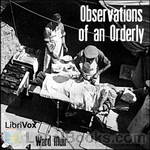 Observations of an Orderly
Observations of an Orderly
Ward Muir brings us into the heart of an English war hospital, describing scenes of cleanliness, triumph, order and sadness. Through the eyes of the orderly we get to see the processes that kept the wards running, and relive some tales from within the hospital walls. | |
By: Wilkinson Dent Bird (1869-1943) | |
|---|---|
 Two Essays On Military History, Strategy, and Tactics: Mountain Warfare (1909) And Naval Strategy (1917)
Two Essays On Military History, Strategy, and Tactics: Mountain Warfare (1909) And Naval Strategy (1917)
One essay lays out tactics for mountain fighting, focused on British Army experience on the Indian frontier , penned by a British officer who fought in that conflict, Wilkinson Dent Bird. The other essay focuses on the British navy in World War I written by an author who specialized in British naval strategy and history, John Leyland. - Summary by david wales | |
By: Willa Cather (1873-1947) | |
|---|---|
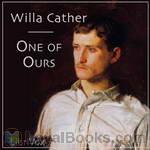 One of Ours
One of Ours
This 1923 Pulitzer Prize winning novel was written by Willa Cather. This work had been inspired by reading her cousin G.P. Cather’s wartime letters home to his mother. He was the first officer from Nebraska killed in World War I. Claude Wheeler, the subject of the novel, is a young man growing up on a Nebraska farm. The son of well to do parents, Claude is troubled by his apparent inability to find purpose with his life. Everything he does seems to turn out wrong, at least in his own mind. Although he is a skilled farmer, Claude believes his destiny lies elsewhere... | |
By: William Allison Sweeney | |
|---|---|
 History of the American Negro
History of the American Negro
History Of The American Negro In The Great World WarHis Splendid Record In The Battle Zones Of Europe By W. Allison Sweeney Contributing Editor Of The Chicago Defender. CHAPTER I. SPIRITUAL EMANCIPATION OF NATIONS. The march of civilization is attended by strange influences. Providence which directs the advancement of mankind, moves in such mysterious ways that none can sense its design or reason out its import. Frequently the forces of evil are turned to account in defeating their own objects. Great tragedies, cruel wars, cataclysms of woe, have acted as enlightening and refining agents... | |
By: William C. Everhart (1921-2017) | |
|---|---|
 Vicksburg National Military Park, Mississippi
Vicksburg National Military Park, Mississippi
In the American Civil War, the Vicksburg campaign was a pivotal victory for the Union under the generalship of Ulysses S. Grant, who as a result was promoted by President Lincoln to command of all the North’s military forces. Historian James M. McPherson called Vicksburg “The most brilliant and innovative campaign of the Civil War.” A U.S. Army field manual called it “the most brilliant campaign ever fought on American soil.” National Park Service Historical Manual number 21 published in 1954. - Summary by David Wales | |
By: William Faulkner (1897-1962) | |
|---|---|
 Soldiers' Pay
Soldiers' Pay
Soldiers return from the War to a mixed reception in America. The first novel by one of the 20th century's most poetic writers experimenting in stream of consciousness, and adept at dialogue. - Summary by Czandra | |
By: William Howard Taft (1857-1930) | |
|---|---|
 State of the Union Addresses by United States Presidents (1909 - 1912)
State of the Union Addresses by United States Presidents (1909 - 1912)
The State of the Union address is a speech presented by the President of the United States to a joint session of the United States Congress, typically delivered annually. The address not only reports on the condition of the nation but also allows the President to outline his legislative agenda and national priorities. This album contains recordings of addresses from William H. Taft. - Summary by Wikipedia | |